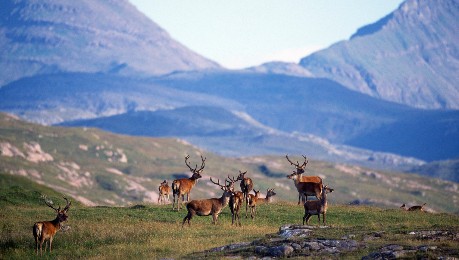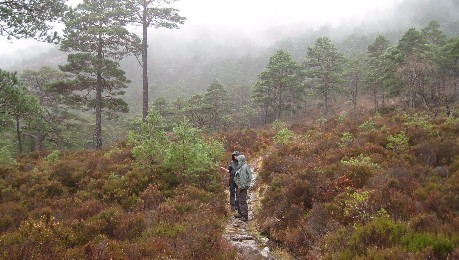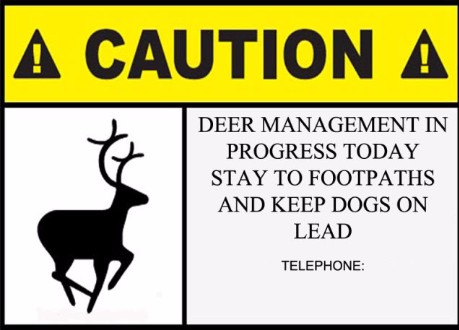Deer stalking takes place in many areas of the Highlands and Islands and anyone hill walking, climbing and ski touring has a responsibility to be aware of when and where it is happening.
You can help minimise disturbance during the stalking season by taking heed of specific guidance on where stalking is taking place, especially during two key periods from 1st – 20th October and towards the end of the hind season which ends on 15th February.
Please use the Heading for the Scottish Hills website and other information sources, such as estate websites and social media, to help plan your routes during the stalking season.
Why cull deer?
Deer are a welcome sight on the hill but their high numbers in some areas, and lack of natural predators, mean that they can harm upland habitats through browsing, grazing and trampling. High deer numbers prevent woodland from regenerating naturally without extensive deer fencing.
In the absence of natural predation, it falls to people to manage the growing deer populations carefully. Stalking keeps deer numbers in balance with the environment and enables the natural regeneration of trees, shrubs and other vegetation.
Most people are unaware that they are causing issues for stalkers, but deer are alert to human activity from a great distance, and it is often impossible to tell when our presence has unsettled deer. When disturbed they will readily move away from areas where stalking is taking place making it more difficult, or impossible, to cull deer in that area on that day.


When to be aware of stalking?
Stalking is determined by the natural seasonal breeding cycle and movements of red deer, as well as animal welfare considerations. The number of people heading to some of our most popular hills has increased in recent years, and hill walking increases the likelihood that we accidentally disturb essential deer culling through autumn and winter.
From 2023, red deer stag stalking can take place at any time of year. The first three weeks of October are the busiest time of the stag stalking season and a key period of the year to achieve reductions in deer numbers.
Red deer hind stalking currently takes place from the 21st of October to the 15th of February, with the end of the season often being a key period when deer managers are working hard to achieve their cull targets, often in challenging weather conditions and short daylight hours.
How to minimise disturbance?
It’s our responsibility as hillgoers to be aware that there may be stalking activity and to avoid disturbing it. Be prepared for the busier stalking season by following the advice below:
Hill walkers' responsibility
Deer stalking is an essential part of sustainable deer management in Scotland, addressing biodiversity loss in the mountain landscapes we cherish. The Scottish Outdoor Access Code calls on us to help minimise disturbance during the stalking season by taking “reasonable steps” to find out where stalking is taking place and by “taking account of advice on alternative routes”.
The Heading for the Scottish Hills website has enabled improved communication between estates and walkers. It is the main source of information on stalking activity in mountain areas across Scotland. Though not fully comprehensive, many estates provide it with up-to-date advice on restrictions and alternative routes for walkers and climbers, or, contact details for further enquiries. Work is continuing to expand this service.

If information is not available via Heading for the Scottish Hills then please follow any local information signs or proceed with caution during the stalking season.
If you consider that information (whether on location or on websites) is contrary to the advice in the Scottish Outdoor Access Code, unclear, unhelpful or unreasonable, let the relevant Local Access Officer know and copy us in. We are working with NatureScot, local authorities and deer management groups to improve the situation for all hill goers.